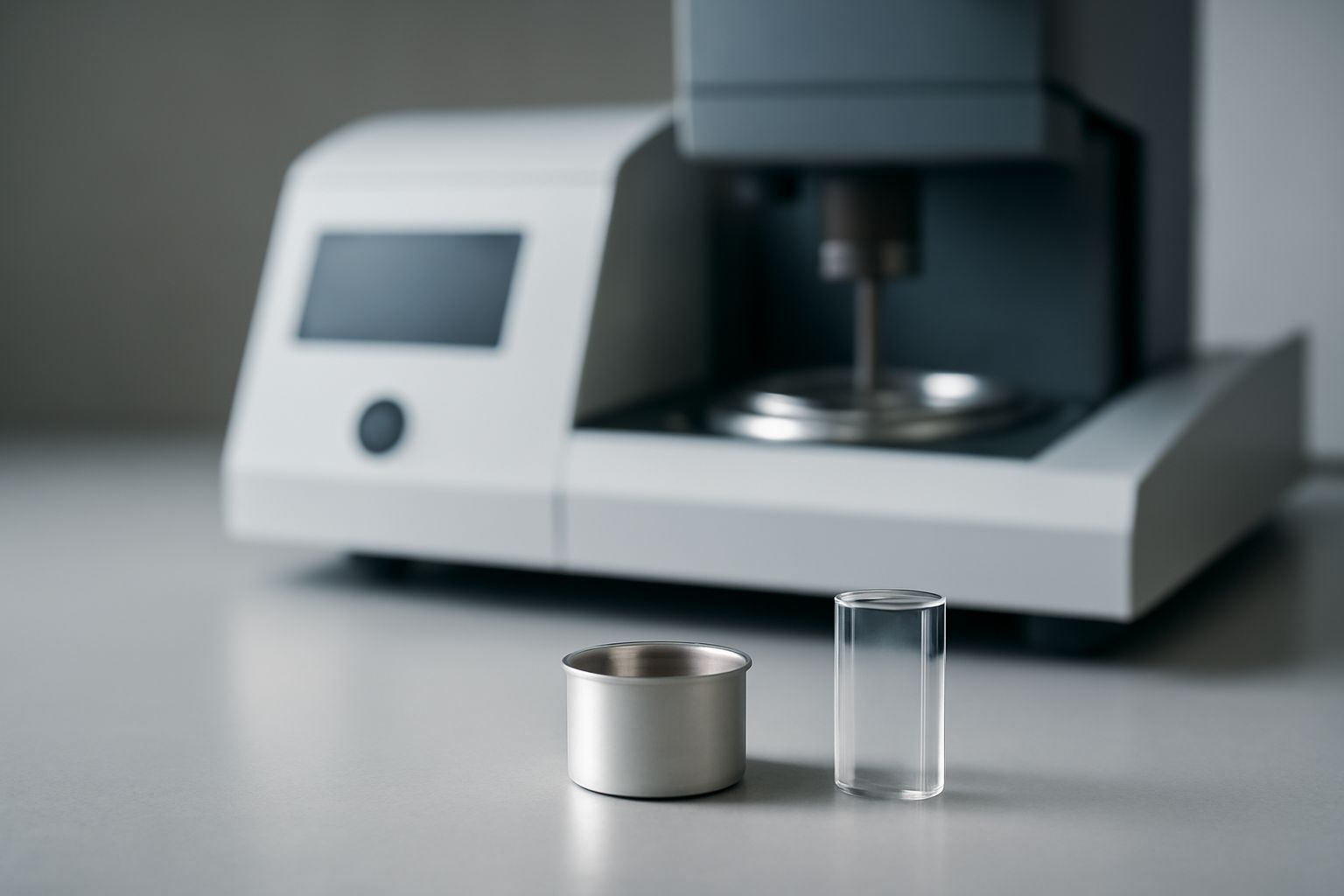Your cart is empty.
shop now
Your cart is empty.
shop now
Inconsistent results and wasted tests often come from using the wrong containers with thermal analyzers. I know how frustrating these mismatches can be.
To ensure compatibility between sample containers and thermal analyzers, match all dimensions and specifications, choose the right container materials, and check that every test run delivers stable and accurate results.

Many brands offer sample containers for DSC, TGA, or STA systems, but small differences can ruin your workflow. I have learned that even one millimeter error or a wrong alloy leads to unreliable data. Let’s look at the exact steps and factors for getting perfect compatibility every time.
Every analyzer model has its own set of requirements. Ignoring these details will almost always lead to trouble and poor results.
Check the specifications of your analyzer before choosing sample containers. Key factors include sample pan size, temperature limits, and compatibility with automation and sensors.
I always start by referencing the original instrument manual or contacting the manufacturer. Specifications usually list the acceptable container diameters, depths, and materials. You may also find limits for mass, maximum temperature, and if you need special sealing. Here is a comparison of the critical specs that affect daily use, including a link to a sample manual at DSC on Wikipedia for reference.
| Instrument Brand | Essential Specification | How It Affects Container Choice |
|---|---|---|
| TA Instruments | Sample pan diameter & depth | Must fit auto-sampler and sensors |
| NETZSCH | Max. temperature range | Limits possible container alloys |
| METTLER TOLEDO | Recommended material & capacity | Affects baseline and accuracy |
| PERKINELMER | Automation compatibility | Requires standard shape and mass |
Even a tiny mismatch in pan size or shape can lead to test errors, unexpected results, or even analyzer damage. This risk is common when switching brands.
Use a precise measurement of diameter, height, and thickness to align sample containers with analyzer requirements. Small errors may cause leaks, poor heat transfer, or blocked automation arms.
I routinely double-check new containers with a caliper or digital micrometer. Most manufacturers list their tolerances, but variances still show up in practice. Many labs confirm fit by running empty autosampler cycles and visual inspection. Dimensions matter for thermal contact and auto-handling. The following table summarizes key dimension checks for common analyzer brands. More on the importance of engineering tolerances can be found on Wikipedia.
| Analyzer | Critical Dimension | Accepted Tolerance | Validation Step |
|---|---|---|---|
| TA Instruments DSC | Pan outer diameter | ±0.01mm | Auto-loader test |
| NETZSCH TGA | Pan height | ±0.03mm | Clearance check |
| METTLER TOLEDO | Wall thickness | ±0.01mm | Thermal calibration |
| LINSEIS | Total capacity | ±0.02mg | Reference sample run |
See: Engineering Tolerance Explained
Container materials affect the quality of test results, risk of contamination, and the safety of your analyzer. Using the wrong material may also void warranties and cause corrosion.
Choose container materials that match both sample chemistry and analyzer design. Some analyzers need specific metals or ceramics to ensure proper heat flow and prevent unwanted reactions.
I help clients evaluate both the analyzer’s and sample’s thermal and chemical limits. Platinum, high-purity aluminum, and alumina ceramics each fit certain analyzers. Sometimes, standard aluminum pans will leach ions or degrade in high-temperature tests. The table matches materials with their main advantages and risks, and the material compatibility link has more info.
| Material | Analyzer Suitability | Sample Compatibility | Main Risk |
|---|---|---|---|
| Aluminum | DSC, standard TGA | Polymers, organics | Corrosion, melting at 660°C |
| Platinum | High-temp/STA systems | Metals, inorganics, critical samples | High cost |
| Alumina | Corrosive or hot samples | Bio, pharma, ceramics | Can crack under shock |
| Quartz/Silica | Specialized TGA | Oxidizing conditions | Brittle, expensive |
Material compatibility guide: Material Compatibility Definition
Without true validation, even a compatible pan might introduce issues or errors in your thermal analysis results. Skipping these tests proves risky in demanding labs.
Run validation cycles using reference standards and blank tests. This checks for thermal drift, mass loss, or leaks, and confirms container-analyzer match before live sample measurements.
I support labs by designing validation protocols based on standard reference materials. We record baseline stability, mass precision, and sealing performance before running any production samples. When issues show up, such as baseline noise or unexpected weight changes, each test gets reviewed until results align with accepted standards. The table summarizes a typical validation plan. Guidelines for instrument validation can be found at instrument validation on Wikipedia.
| Validation Step | Purpose | How to Check |
|---|---|---|
| Blank run | Detect baseline noise/leaks | Run empty pan, monitor curve |
| Reference material test | Check system accuracy | Compare to certified standard |
| Repeatability check | Ensure consistent results | Run same test multiple times |
| Sealing and closure test | Prevent leaks or sample loss | Monitor weight in heated cycles |
The best thermal analysis comes from matching containers and analyzers at every step. Accuracy means checking specifications, tolerances, materials, and validating every new lot before production runs.
Contact REDTHERMO for compatibility support